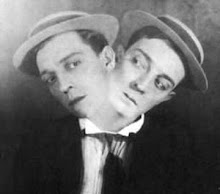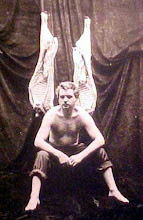Last night I saw Pixar's new Wall-E. This week I write the entry for Kevin Brockmeier's Brief History of the Dead for the Encyclopedia of Contemporary Fiction. Roughly four years ago I delivered a presentation on David Markson's Wittgenstein's Mistress to my Introduction to Theory class. Today I revive my blog in earnest. These things are connected; let me tell you how.
You probably have seen or heard about Wall-E, but you may not be familiar with the two novels. Briefly: Brief History of the Dead is split in two - one part set in "The City," an afterlife limbo where people go and 'live' normal lives as long as there are people alive on earth who remember them. When the last person who remembers you dies, you go on to you-don't-know-where. The other part is set in Antartica, where we follow the struggles of Laura Byrd, stranded on a mission for the Coca-Cola Co. and cut off from any other living soul because, it turns out, she is the last living soul (everyone else has bought it via pandemic). Thus, interestingly, everyone in The City knows Laura Byrd one way or another. Wittgenstein's Mistress is about the supposed Last Woman on Earth, who wanders through the Colosseum and the Louvre and WRITES a memoir for no one to read.
Wall-E is the last robot on earth. He collects, compacts, and stacks trash (keeping some trinkets for himself). He knows nothing but this work, but he pines for company, inspired by his prized VHS copy of Hello Dolly! The junkaesthetic is rendered beautifully by the animators. I'll get back to the film, which is great, in a minute, BUT FIRST: What of this LAST ON EARTH thing - it's long been a space for working out the hypotheticals generated by both serious and pop philosophy (from Hobbes to Mad Max) - by subtracting civilization, we can see INTO nature. Wall-E and Brockmeier's Laura and Markson's Kate inhabit an inverted/perverted Eden (a palindrome Eden - Madam I'm Adam - and naturally Wall-E's eventual love interest is EVE) - the myth of what it means to come last. They are also the stranded - like Cruesoe, like Simon and Piggy, Tom Hanks' volleyball, those people on Lost (a show I've never seen but I've read uses "John Locke" and "Rousseau" as character names).
So this post has two folds, outward: 1) What of this LAST ON EARTH thing? What does it mean? What are some other versions (I know I am Legend)?
2). Wall-E is a remarkable 'kids' film. As is much-remarked upon, the majority of it contains no dialogue but the robot is so endearing that you don't miss it at all. Wall-E is postapocalyptic Chaplin and Keaton - a well meaning bumbler pratfalling through life. Speechless, Chaplin's body often ticked and sputtered like a haywire robot ... but it's not just the physicality - like Keaton, Wall-E is heartsick and smitten - wide-eyed, well-intentioned, sexless ... an underdog in love. He is also out of place and outdated. When EVE arrives and later when we see the digidystopia aboard the spaceship AXIOM, where fat humans live in a megastore planet of ubiquitous screens and instant gratification, we see that WALL-E is an analog anamoly, tracking dirt into the grimly pristine future.
The are many nods here to the history of cinema past the silents. We have 2001 present in the red-eyed HAL called AUTO and in the signature tune Thus Spake Zarathustra (that other one as well). One of the more interesting bits, to me, was that there is a contingent of psych ward misfit malfunctioning robots that join WALL-E and EVE's mini-insurgency against the fascist forces of order. The echoes here are of One Flew Over the Cuckoo's Nest and Cool Hand Luke. And this is the embrace of difference that seems to thread through the best of kid films. A goodhearted liberalism that promises (white lie or not) that we can remake the world. The credit sequence of WALL-E tracks the recivilization of Earth through a history of art from hieroglyph to Van Gogh.
SO I WANT TO KNOW: check the dustbin of your own history. We are made of these narrative artifacts. What are the kids films that meant the most to you then, or now? I go to the Henson hippie mysticism of The Dark Crystal or the folksy musicality of Emmet Otter's Jugband Christmas (those muppets EMOTE), the tender critique of The Secret of NIMH (in which humans are mere voices and body parts, the forces of ignorance). What about the sad center of NEMO, or the you-can-be-anything of BABE. And I was with SHREK's allegory of interspecies romance until she had to be an ogre, too. From when I was a kid there are bits of Bedknobs and Broomsticks, dander from the Aristocats. What else?
07 July 2008
Subscribe to:
Post Comments (Atom)







































2 comments:
Another nod to 2001 is simply the fact that the first 30 minutes or so are basically silent, much like in 2001; it isn't until we get into space in either film that we get more than beeps, blips, and grunts.
Um. I still love the Land Before Time.
Post a Comment